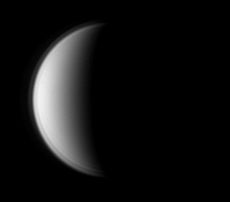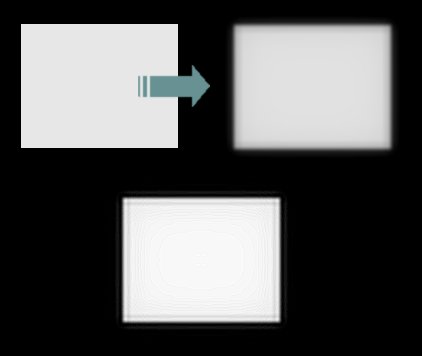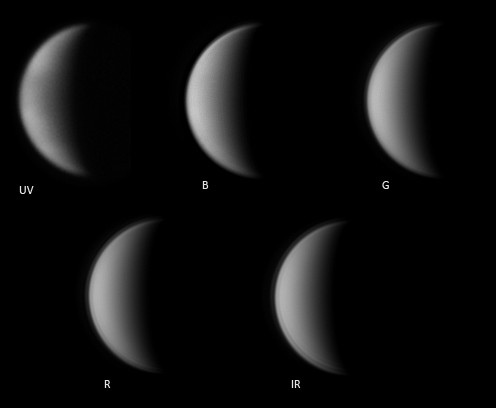Imaging Artefacts
1 - Diffraction pattern artefacts
One artefact often seen on images of planets with a distinct phase (e.g. Venus or Mars) is a diffraction effect at the brightly illuminated edge of the planet: A thin bright contour outside the planet and a darker contour on the inside of the planet parallel to the planet's edge.

Let's take a look at the root cause: Diffraction of light
The wavefront of light from stars and planets passing the aperture of our telescopes is affected by diffraction. A star is in practice a point light source assuming its distance to earth is infinite. The diffraction pattern of a point light source passing the circular aperture of a telescope is an Airy-Disk surrounded by concentric bright rings - the Airy-Pattern.

Let's look at a bright line segment and its transformation through a telescope: Assuming the line has infinite width it can be regarded to consist of infinite point light sources (stars!) along its distance, hence the transformation is an infinite number of Airy-Patterns along the line segment. Note the wavefronts of the imaginary points are independent and not coherent, there's no interference between them, the Airy-Patterns simply superimpose each other.

Expanding the line to a rectangle and transforming it with our telescope aperture diffraction function gives a rectangle with softened edges, bright contours outside the edges and a darker contour inside all along the edges - imagine Airy-Patterns forming the transformed image. Sharpening the resulting image with a wavelet processing gives exactly the same diffraction artefacts as seen in the Venus capture above.

The size of an Airy-Diffraction-Pattern is a function of the size of the aperture and the wavelength of light - the shorter the wavelength, the smaller the Airy-Disk (see Wavelength of light - Seeing vs. Resolution), hence the sizes of the edge artefacts increase with wavelength.

How to avoid?
There's no way to avoid the diffraction pattern effects on brightly lit planet rims since they are caused by physics of light and our limited scope apertures. We can only try to avoid strong sharpening filter settings overenhancing the diffraction patterns. Selective partial image processing might be an option, even deleting the effect, at least outside the planets disk, but such processing methods are discussed controversially and often not regarded as best practice.
Credits
The diffraction patterns shown are simulated with Aberrator by Cor Berrevoets
